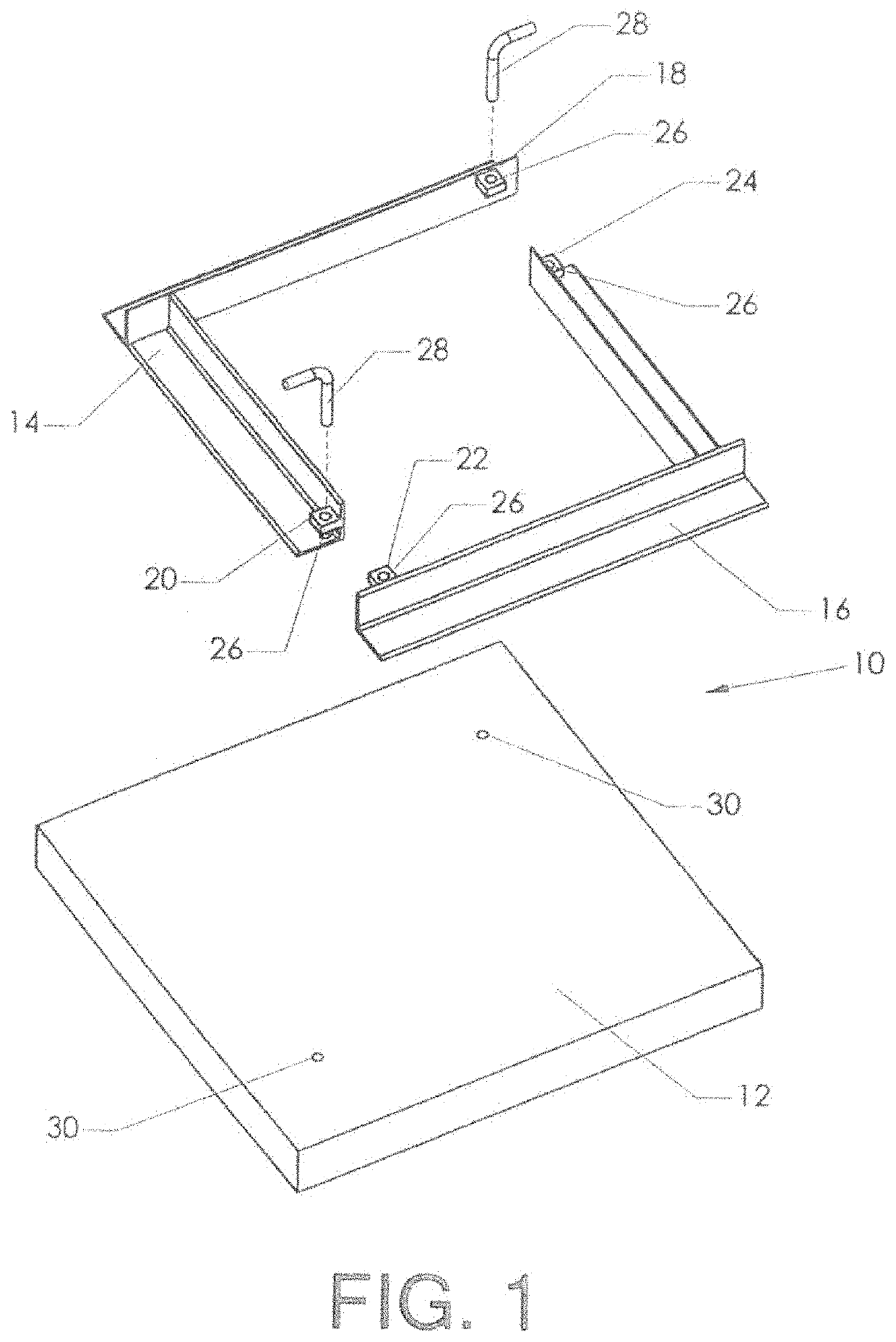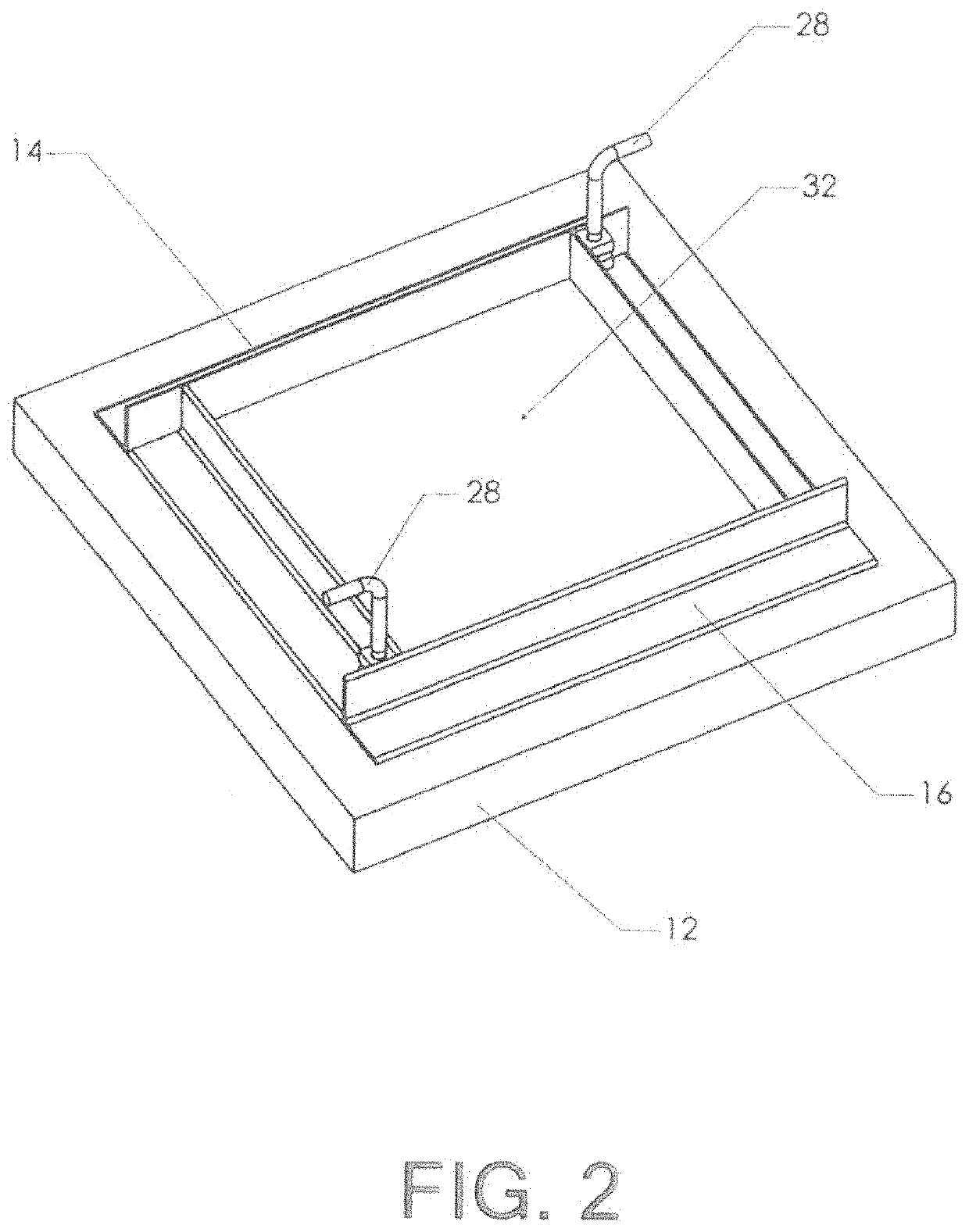Method of producing limestone-simulating concrete
a technology of simulating concrete and limestone, which is applied in the field of building materials, can solve the problems that the size of baking soda clumps will also produce significant cavities in the surface, and achieve the effects of reducing the moisture loss rate, minimizing voids, and high solidity
- Summary
- Abstract
- Description
- Claims
- Application Information
AI Technical Summary
Benefits of technology
Problems solved by technology
Method used
Image
Examples
Embodiment Construction
[0063]FIG. 1 shows the components of the mold used to create a cast tile. The mold is created by joining half frame 14 and half frame 16 to base 12. Half frame 14 and half frame 16 are both “L” shaped pieces that form a square when joined at their ends. Half frame 14 has upper tab 18 that mates with lower tab 24 of half frame 16 when the two half frames are joined to form a square. Half frame 14 also has lower tab 20 that mates with upper tab 22 of half frame 16 when the square-framed mold is formed. Corresponding holes 26 of upper tab 18 and lower tab 24 and corresponding holes 26 of upper tab 22 and lower tab 20 align when the two frames are joined and the upper and lower tabs are mated.
[0064]Base 12 has two pin holes 30 which are adapted to receive pins 28 when tire frame is placed on the base. As described above, corresponding holes 26 of upper tab 18 and lower tab 24 and corresponding holes 26 of upper tab 22 and lower tab 20 are aligned when half frame 14 and half frame 16 are...
PUM
| Property | Measurement | Unit |
|---|---|---|
| particle size | aaaaa | aaaaa |
| size | aaaaa | aaaaa |
| diameter | aaaaa | aaaaa |
Abstract
Description
Claims
Application Information
 Login to View More
Login to View More - R&D
- Intellectual Property
- Life Sciences
- Materials
- Tech Scout
- Unparalleled Data Quality
- Higher Quality Content
- 60% Fewer Hallucinations
Browse by: Latest US Patents, China's latest patents, Technical Efficacy Thesaurus, Application Domain, Technology Topic, Popular Technical Reports.
© 2025 PatSnap. All rights reserved.Legal|Privacy policy|Modern Slavery Act Transparency Statement|Sitemap|About US| Contact US: help@patsnap.com



